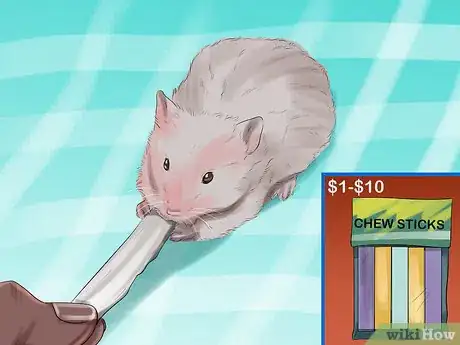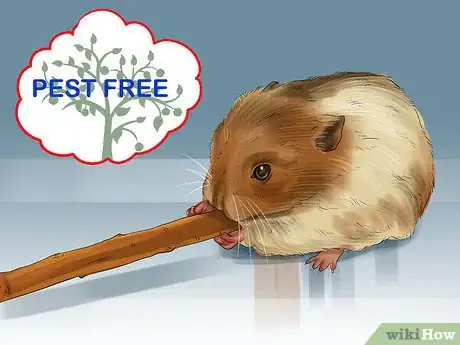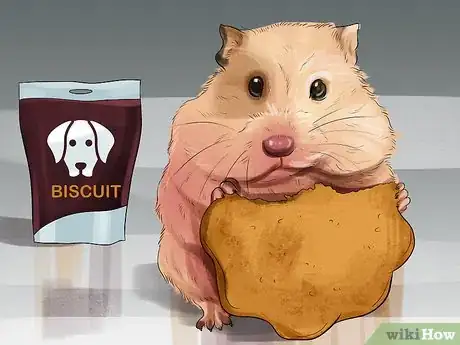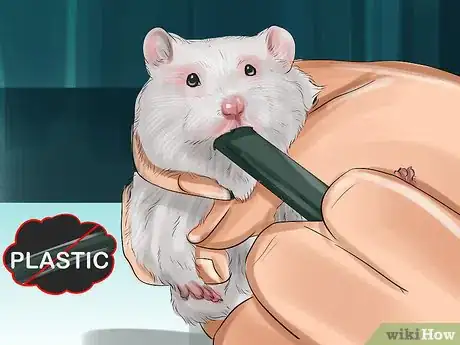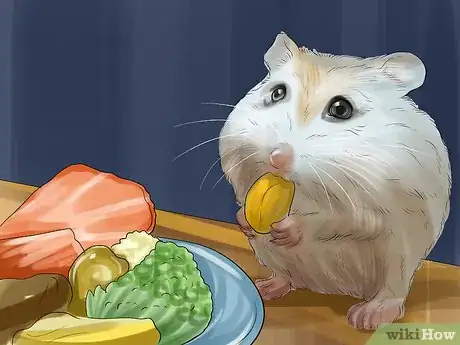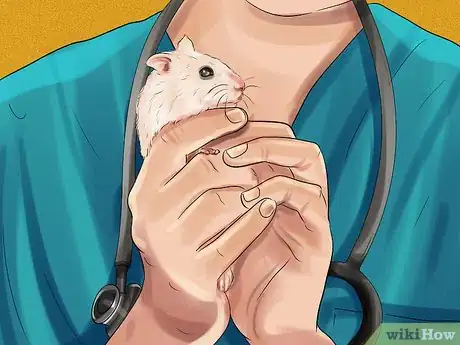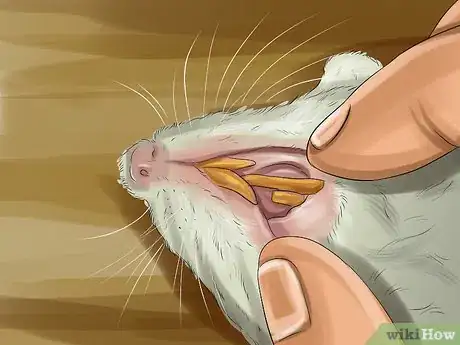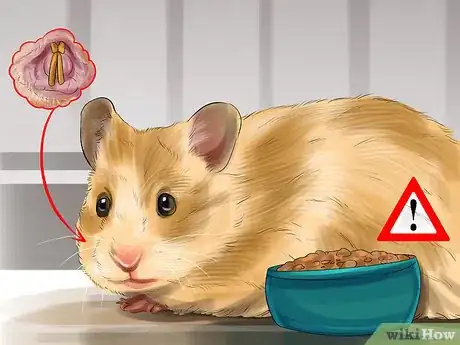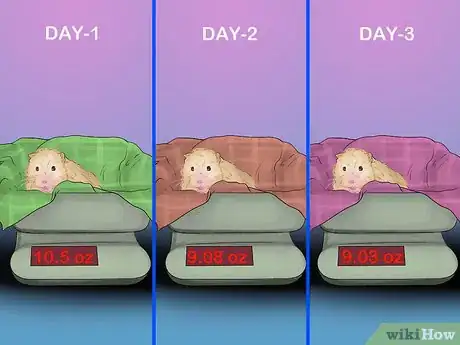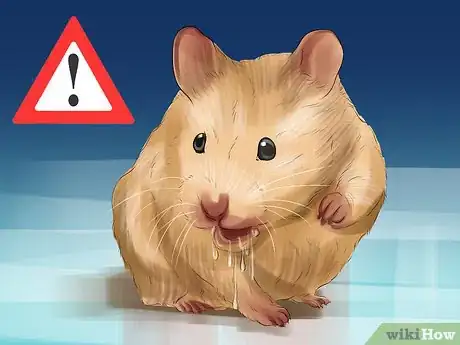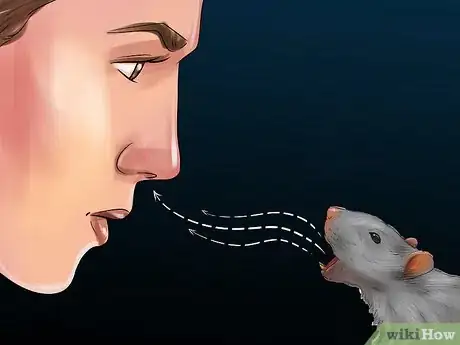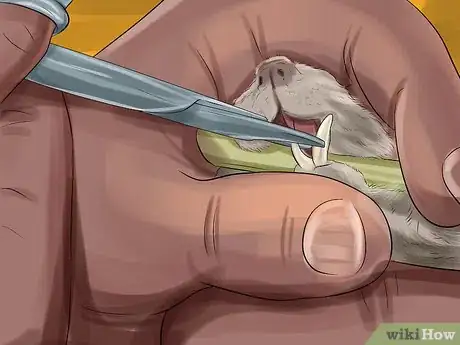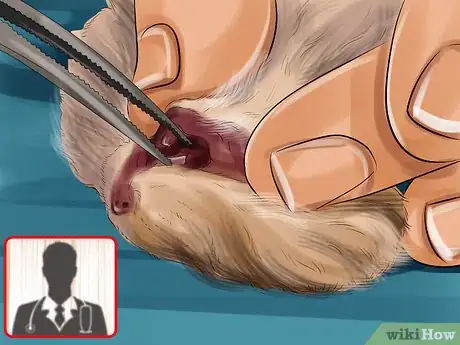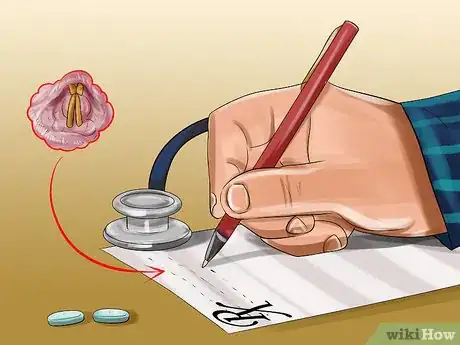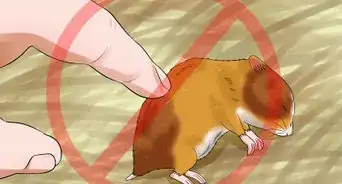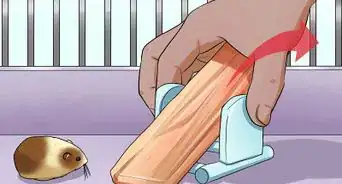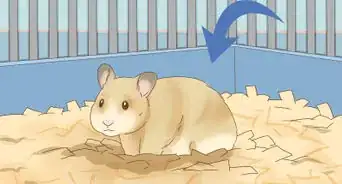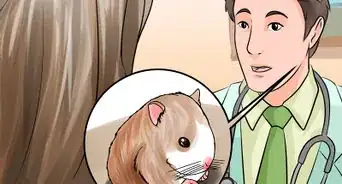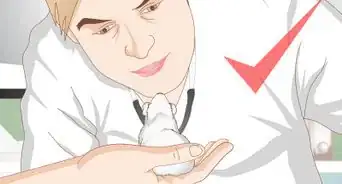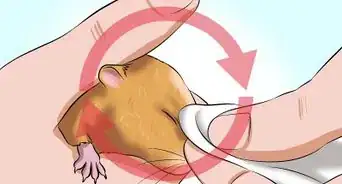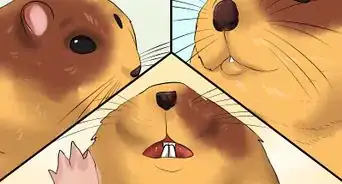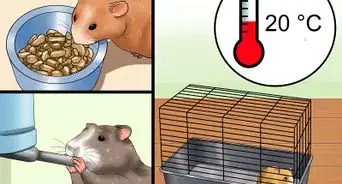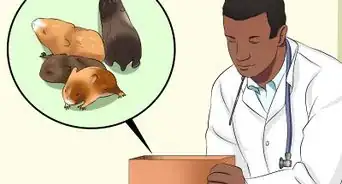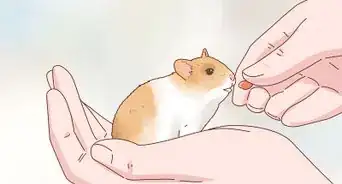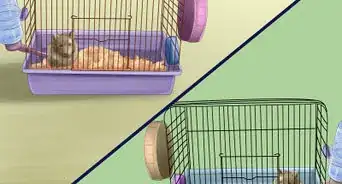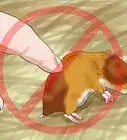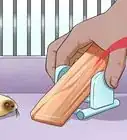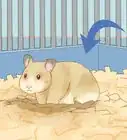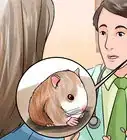This article was co-authored by Pippa Elliott, MRCVS. Dr. Elliott, BVMS, MRCVS is a veterinarian with over 30 years of experience in veterinary surgery and companion animal practice. She graduated from the University of Glasgow in 1987 with a degree in veterinary medicine and surgery. She has worked at the same animal clinic in her hometown for over 20 years.
There are 10 references cited in this article, which can be found at the bottom of the page.
This article has been viewed 79,160 times.
Are you worried about your fuzzy friend's dental health? Hamsters are great pets that are typically easy to care for. However, they are prone to dental problems because their front teeth grow consistently throughout life. If hamsters don't wear down their teeth enough, the teeth can become overgrown, infected, and painful. In order to keep your hamster's teeth healthy, you should give them preventative care, be on the lookout for signs of infection, and get your pet dental care if a problem occurs.[1]
Steps
Preventing Dental Problems
-
1Provide your hamster with chew sticks. You can throw in 1-2 chew sticks or chew toys into your hamster's cage as needed. Although these fun treats look fantastic and colorful to you, they are usually just slabs of wood brushed over with a non-toxic paint.[2]
- Packages of chew sticks generally cost $1-$10 USD, depending on what brand, quantity, and store you buy them from. You can also give your hamster popsicle sticks, which are available at most craft and big box stores.[3]
- Chew sticks are often made out of balsa wood or another light-weight wood.
- Make sure chews are constantly available or your hamster could face dental problems in the future, such as overgrown teeth.
-
2Give your hamster untreated wood to chew on. If you are looking for a more nutritious, environmentally friendly way of keeping your hamster's teeth shaved down, you can use pesticide-free fruit tree branches. Cut off a 3–4 inches (7.6–10.2 cm) section that is about 1–2 inches (2.5–5.1 cm) thick and give it to your hamster.[4]
- Wood from an apple tree is best but cherry, peach, or pear wood works as well.
Advertisement -
3Allow your hamster to chew on a dog biscuit once a month. You can use dog biscuits as a replacement for chew sticks and wood. However, they can be very high in fat, so you should only give these in small quantities on occasion.
- Consider dog biscuits a special treat that will also keep your pet healthy if eaten in moderation.
-
4Make sure items you give your hamster are safe for it. Hamsters will chew on most things they are given. Therefore, you should never give them anything that is toxic or indigestible. Do not give them plastic to chew on. Also avoid giving them pieces of plants that are hazardous to them, including the wood of English ivy, hydrangea, and azaleas.[5]
- Make sure that every chew is non-toxic. Look for a label that states that items are non-toxic and appropriate for pets. Also, be sure of what you are giving your hamster before you give it to them. For example, don't give your hamster a random piece of wood you find if you are not sure what type of wood it is.
- A great chew for hamsters are empty toilet paper or paper towel rolls. This will give the hamster something to chew, and the hamster will even turn it into bedding.
-
5Feed your hamster a healthy diet. In addition to overgrown teeth, your hamster can develop dental problems from eating a poor diet. Make sure that your pet gets a combination of commercial hamster mix and fresh fruits and vegetables. These foods, in addition to items to chew and plenty of fresh water, will help keep your hamster's mouth healthy.[6]
-
6Get annual veterinary care for your hamster. Even if you don't see any developing dental problems with your hamster, you should still have it looked at by a vet every year. A veterinarian will be able to assess the animal's health and spot developing problems that you may not be able to identify.[7]
- Some hamsters may have a misaligned jaw, which can it make impossible for them to grind down their teeth. If this is a problem with your hamster, your vet can help prevent overgrown teeth.
Identifying Potential Tooth Troubles
-
1Inspect your hamster's teeth weekly. Because hamsters are so prone to dental problems, you should inspect their teeth every week. Hold the hamster still and gently open its mouth by pulling the fur at the back of the head, so the animal is forced to smile. Make sure that the teeth at the front of the mouth, called the incisors, meet each other.[8]
- If the top or bottom incisors are overgrown, they will not meet and grind against each other.
- If the teeth still meet but are so long that your hamster cannot fit a piece of food between them when it has its jaw wide open, then its teeth are too long.
- You should also look for broken or misshapen incisors. Broken or otherwise misshapen teeth should be looked at by a veterinarian.
-
2Pay attention to your hamster's appetite. A hamster that is having dental problems will likely eat less food than normal. If your hamster's dish suddenly remains full, it could be because of overgrown teeth or another dental problem.[9]
- Hamsters do tend to hide stashes of food in their cages, so your hamster may be hiding food even though it is not eating any. When you clean out your hamster's cage weekly, be on the lookout for stashes of food.
-
3Look for signs of weight loss. While it is hard to tell if a hamster is losing weight because of its fur coat, you may be able to tell when you pick it up. Weight loss is a sign that your hamster isn't eating enough, which is often caused by a problem with its teeth.[10]
- Try to weigh your hamster regularly so that you know what it weighs when it is healthy. This will make identifying weight loss much easier.
- To weigh your hamster, place a treat on a digital scale and then zero out the weight. Once the scale reads zero, allow the hamster to climb up on the scale for the treat and read the weight.
-
4Notice excessive drool. A hamster that has an unhealthy mouth may produce excessive saliva. This excess saliva occurs because the hamster cannot close its mouth or swallow properly. Excessive drooling also occurs simply because the animal is stressed and in pain.[11]
- Excess saliva can often be spotted by the staining it creates around the hamster's mouth and on its chin.
-
5Smell your hamster's mouth. If you suspect that your hamster is having dental problems, the smell of a hamster's mouth can clue you in to a problem. Hamsters with infections in their mouth often have a bad smell emanating from it. This is not the normal smell of your hamster's food and body, but a more rancid smell.[12]
Treating Dental Issues
-
1Trim your hamster's incisors if you’re trained and confident. You can trim down overgrown teeth with a pair of nail clippers, but this can lead to fractures in the tooth if not done carefully. Because of this, it's important to talk to your veterinarian before attempting to trim your hamster's incisors. They can show you the way to hold the hamster still, the way to trim the teeth, and what mistakes to avoid.[13]
- If your are hesitant at all to do this at home, then have your veterinarian do it. Poorly trimmed teeth can cause further health problems instead of eliminating them.
- Overgrown back teeth need to be clipped with special tools, and this procedure should be done while the hamster is sedated in a veterinary office. Your vet will likely use an ultrasonic dental machine to safely grind down the hamster's teeth.
-
2Have your veterinarian trim your hamster's teeth instead. If you are having trouble keeping their teeth down with chew toys, make an appointment with your veterinarian. They will gladly trim the teeth down and give you some tips on keeping your hamster's teeth healthy.[14]
- Make sure to go to a veterinarian that has experience working with rodents. These vets are typically labeled as exotic pet veterinarians.
-
3Get treatment for related medical problems. If your hamster has had overgrown teeth or other dental problems, it may have underlying issues, such as an infection. Your veterinarian will prescribe treatment for these health problems and it is your job to follow through with treatment at home.[15]
- In the case of an infection caused by overgrown teeth, your veterinarian will likely prescribe your hamster a round of antibiotics. Give this medication to your pet as directed.
References
- ↑ https://vcahospitals.com/know-your-pet/owning-a-pet-hamster
- ↑ http://animals.mom.me/kind-wood-safe-hamsters-chew-1783.html
- ↑ https://petcentral.chewy.com/how-to-stop-a-hamster-from-chewing-its-cage/
- ↑ http://www.drsfostersmith.com/pic/article.cfm?aid=132
- ↑ https://www.rspca.org.uk/adviceandwelfare/pets/rodents/poisoning
- ↑ http://www.afrma.org/dentalprobs.htm
- ↑ https://u.osu.edu/pets4life/pet-care-basics/rodents/#hamsters
- ↑ http://www.northstarrescue.org/pet-care-information/pet-hamster-care/143-a-guide-to-pet-syrian-hamster-cages
- ↑ http://www.afrma.org/dentalprobs.htm
- ↑ http://www.afrma.org/dentalprobs.htm
- ↑ http://www.afrma.org/dentalprobs.htm
- ↑ http://www.afrma.org/dentalprobs.htm
- ↑ https://www.caringpets.org/how-to-take-care-of-a-hamster/illnesses/malocculusion-of-teeth/
- ↑ http://www.merckvetmanual.com/exotic-and-laboratory-animals/rodents/hamsters
- ↑ http://www.afrma.org/dentalprobs.htm
About This Article
To keep hamster teeth healthy, give your hamster plenty of things to chew on in its cage, like chew sticks and untreated wood. You should also feed your hamster a healthy diet that consists of commercial hamster mix, fresh fruit, and vegetables, which will help prevent dental problems. Try to check your hamster's teeth once a week, and if you notice that the top or bottom teeth are overgrown or broken, take your hamster to the vet. For tips on treating common hamster dental problems, scroll down!
